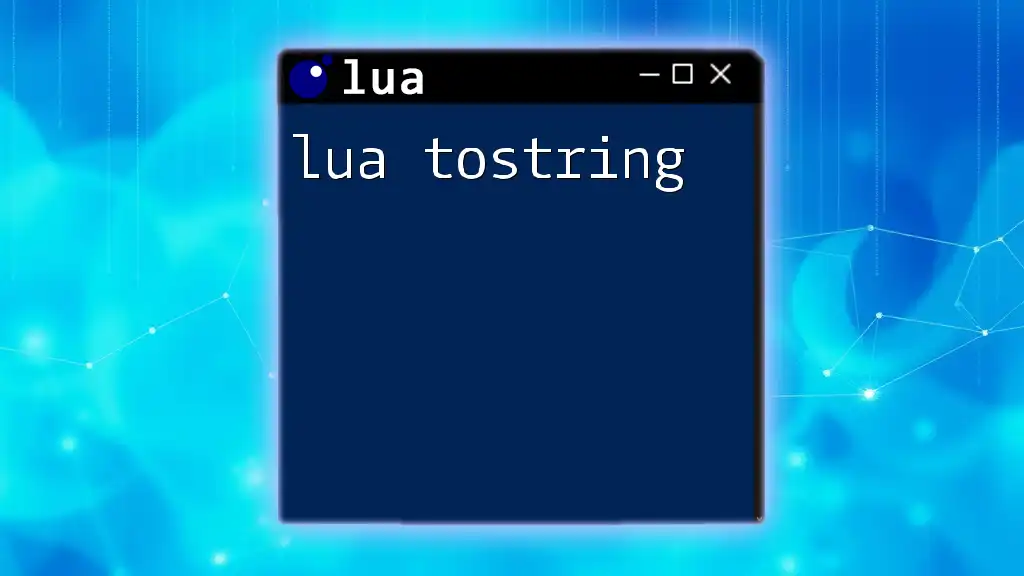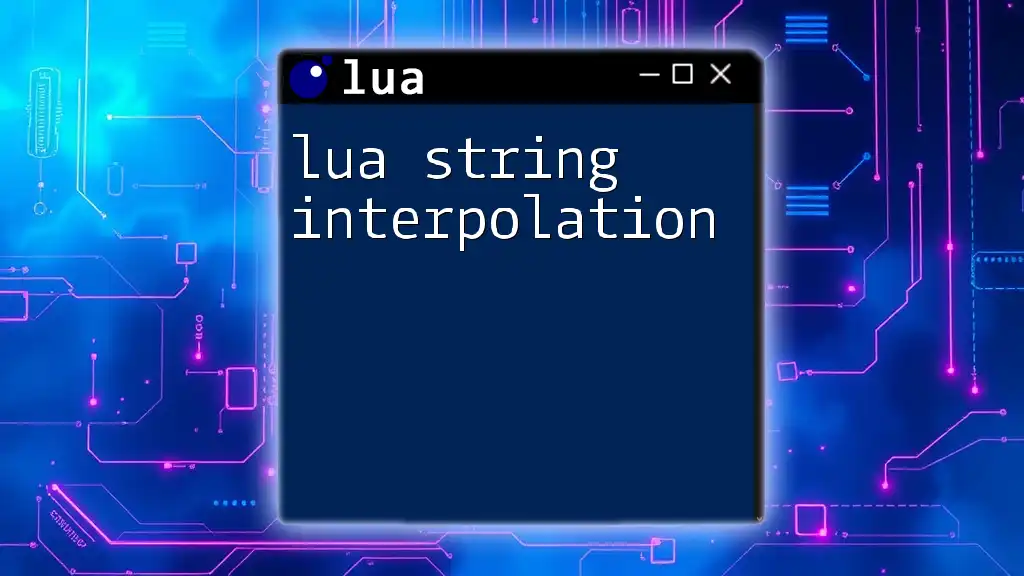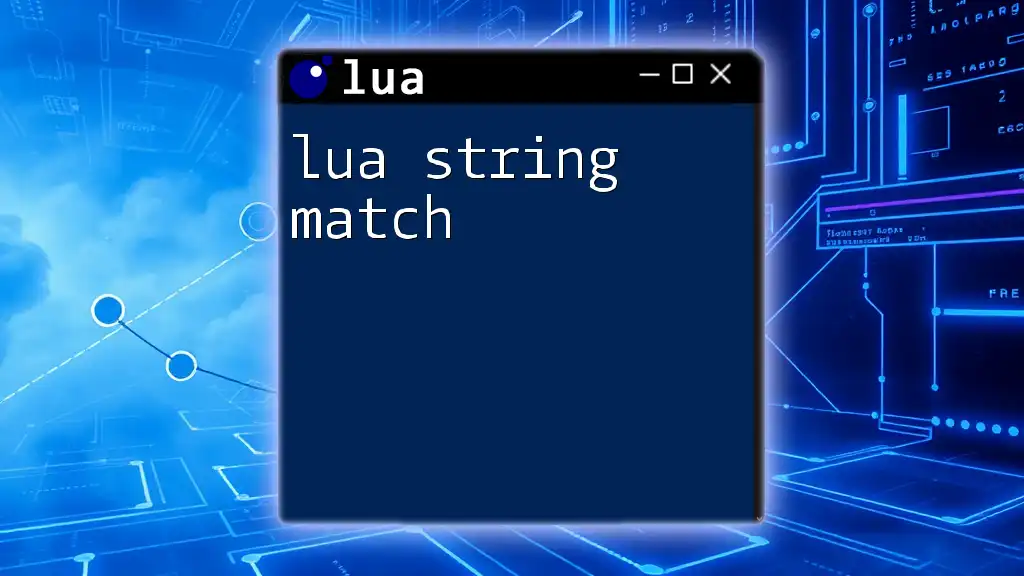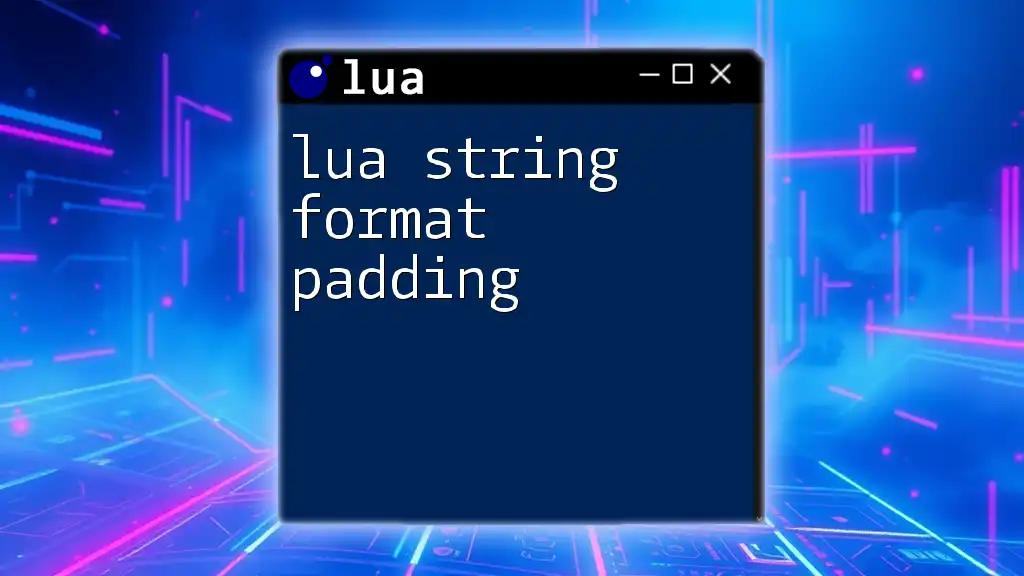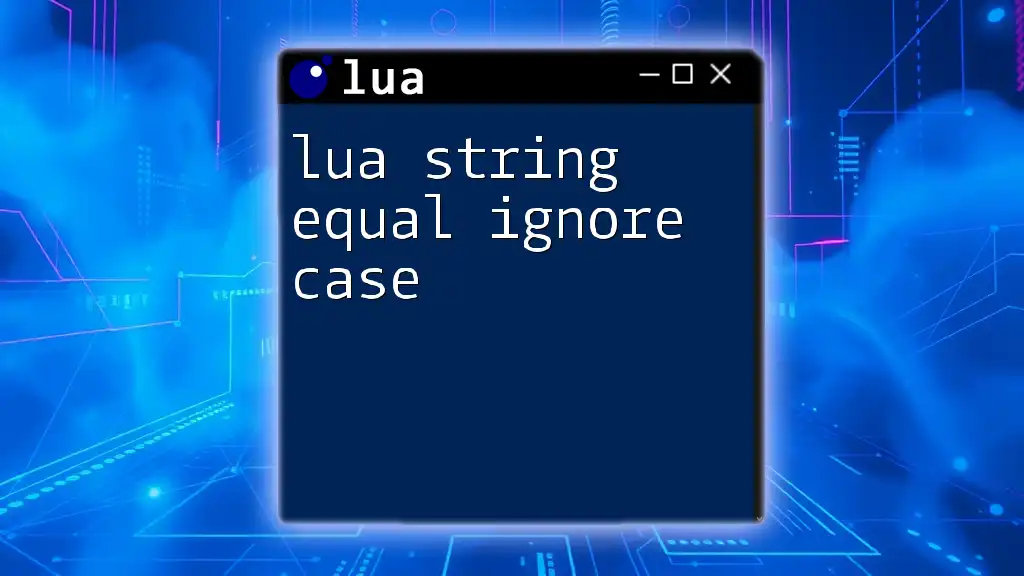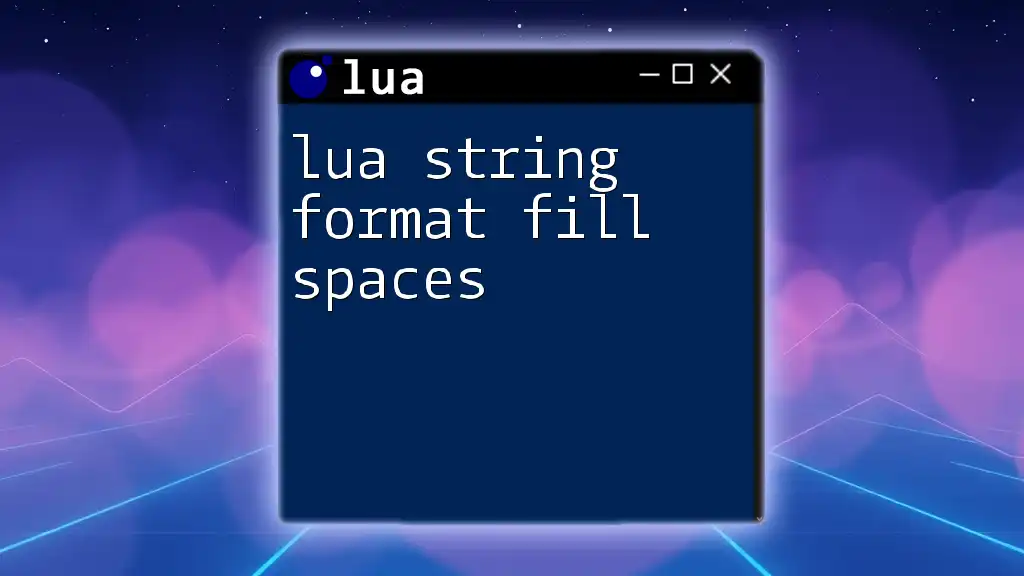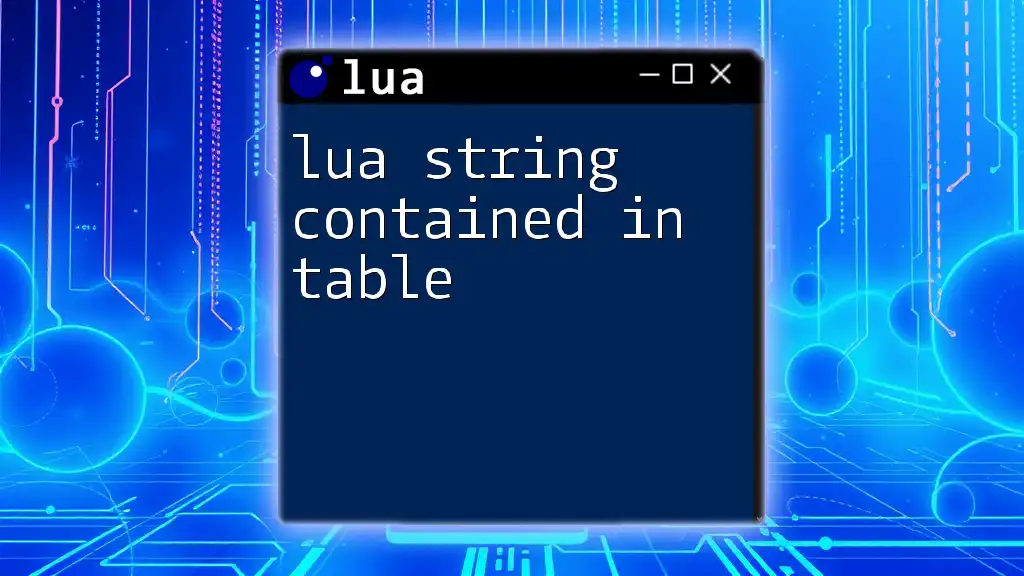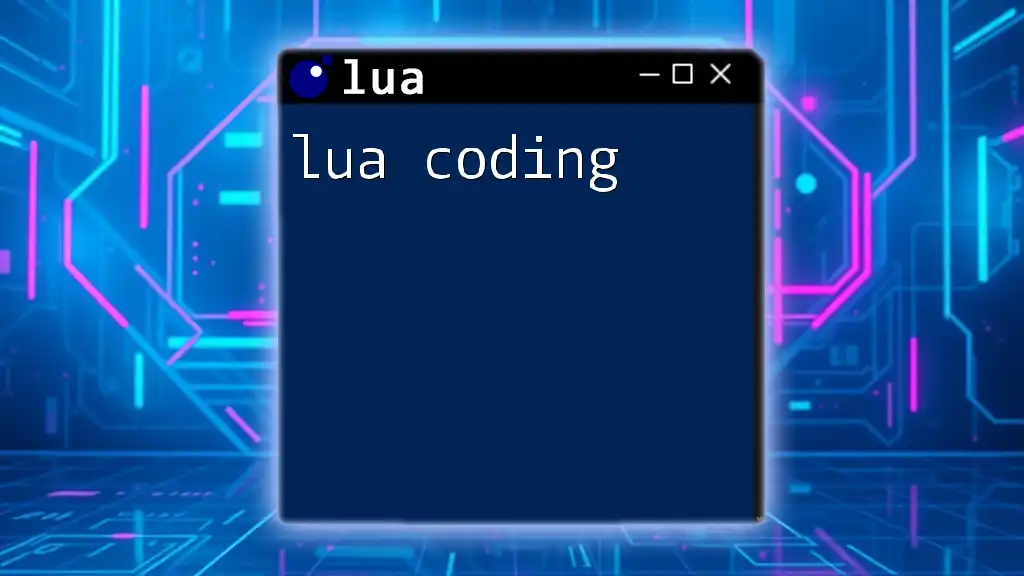The `tostring` function in Lua converts a given value to its string representation.
Here's a code snippet demonstrating its use:
local number = 42
local strNumber = tostring(number)
print(strNumber) -- Output: "42"
What is `tostring`?
The `tostring` function in Lua is a built-in function designed to convert various data types into their string representations. This function is critical for ensuring that different types can be easily displayed, logged, or manipulated as strings in your Lua code.
Why Use `tostring`?
The primary use case for `tostring` is to transform data types into strings, thus enabling clearer representation of data. This can be particularly useful in debugging and logging scenarios, where you may need to display information about your code's state or inspect variable values at runtime. By converting values to strings, you can avoid type errors and ensure smoother operations during string manipulations.
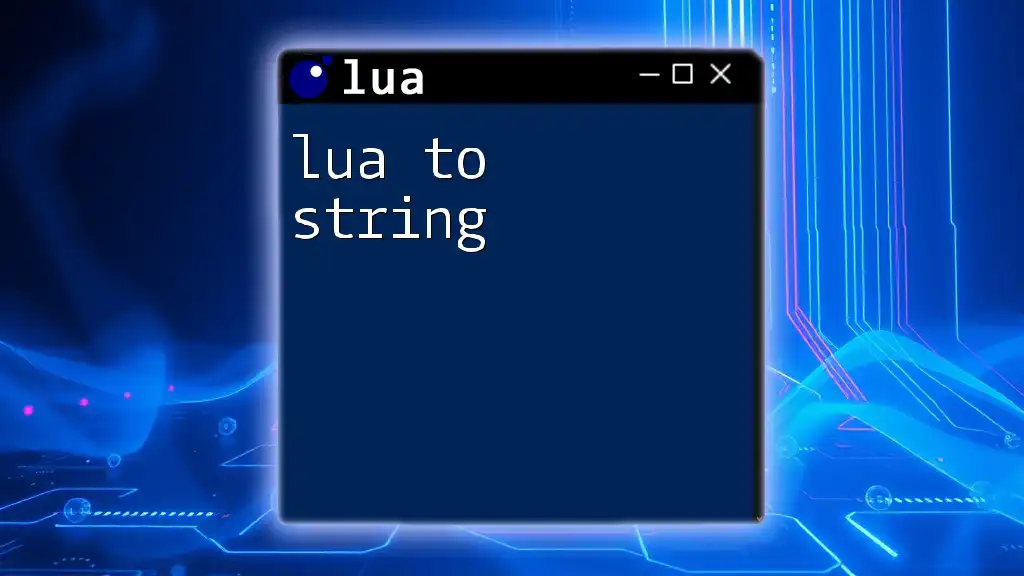
Syntax of `tostring`
The syntax for the `tostring` function is straightforward:
tostring(value)
Parameters
- value: Any Lua data type, including numbers, booleans, tables, functions, and even `nil`. The function will attempt to convert this value into a string format.
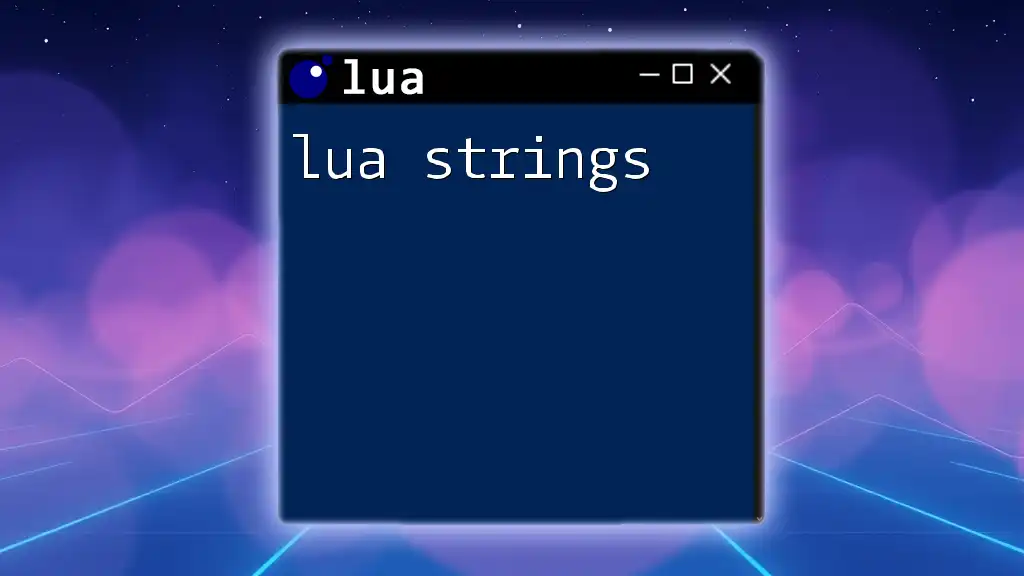
Return Value of `tostring`
The return value of `tostring` is always a string. The function ensures that regardless of the input type, the output will be in string format. For examples:
- A number will be represented as its numeric value in string form.
- A boolean will be converted to either "true" or "false".
- If a table is provided, a string reflecting the table's memory address is returned.
- Special handling occurs for `nil`, which returns the string "nil".
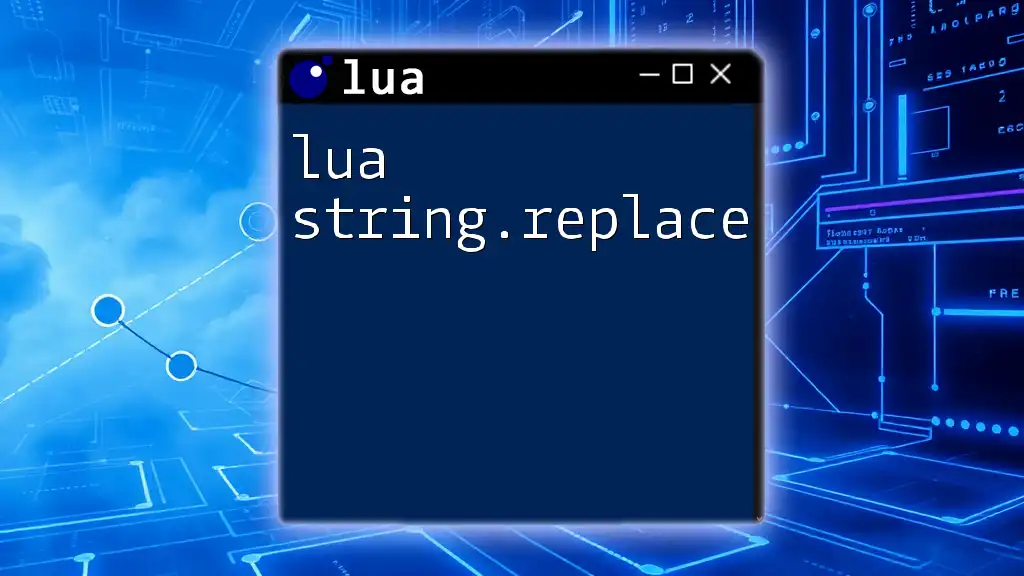
Data Types Supported by `tostring`
The `tostring` function can handle a variety of Lua data types. Below are in-depth explanations of each type along with code snippets.
Detailed Examples
Converting Numbers
When you pass a number to `tostring`, it will return the number's string representation. For instance:
local num = 100
print(tostring(num)) -- Output: "100"
Converting Booleans
Booleans are converted to their string equivalents: "true" or "false". Here's an example:
local isTrue = true
print(tostring(isTrue)) -- Output: "true"
Converting Tables
When you attempt to convert a table, `tostring` returns a string that represents the table's memory address rather than its contents. This can be confusing for beginners, as it doesn't yield a user-friendly string:
local tbl = { key = "value" }
print(tostring(tbl)) -- Output: Table address
To inspect the contents of a table, consider using functions like `table.concat` or a custom function to iterate through the table.
Converting Functions
Similar to tables, when a function is passed to `tostring`, it converts it to a string that represents its memory address:
local function myFunc() end
print(tostring(myFunc)) -- Output: Function address
Handling Nil
The case of `nil` is unique; `tostring` explicitly returns the string "nil":
local value = nil
print(tostring(value)) -- Output: "nil"
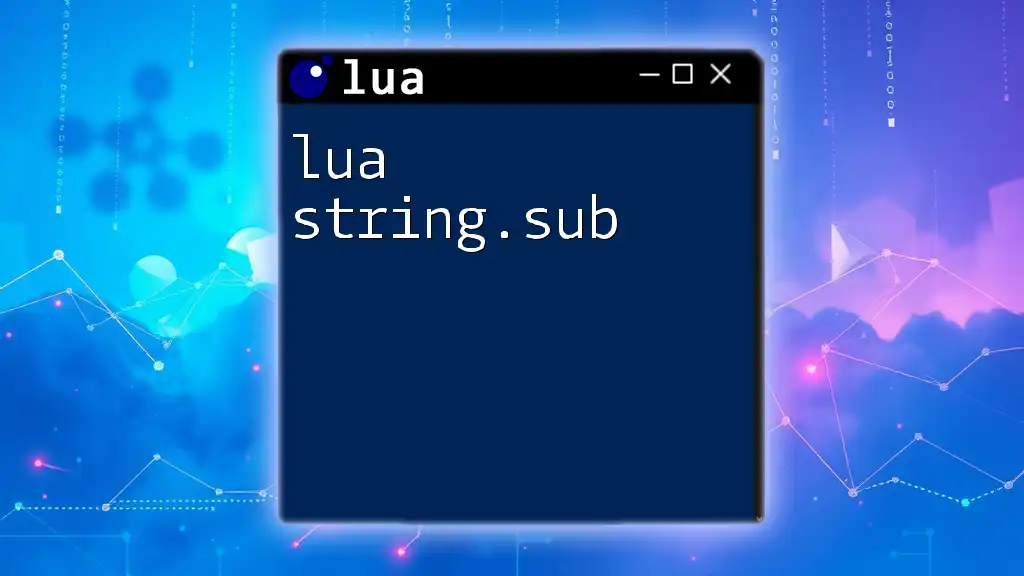
Practical Applications of `tostring`
Debugging
Debugging is a crucial part of programming, and `tostring` can help simplify this process. When logging variables or errors, using `tostring` can ensure consistent output even when variable types vary. For example, a simple logging function might look like this:
function log(value)
print("Log: " .. tostring(value))
end
log(42) -- Output: Log: 42
This function will output a string that always includes the type-safe conversion of `value`, allowing you to trace issues effectively.
String Concatenation
In Lua, there are many situations where you will need to concatenate strings, and `tostring` plays a vital role in ensuring that variables are correctly converted. Consider the following example, where we create a message that includes a number:
local age = 25
local message = "I am " .. tostring(age) .. " years old."
print(message) -- Output: I am 25 years old.
In this code, `age` is converted to a string during concatenation, thus preventing type errors and maintaining the integrity of the output.

Common Mistakes
Forgetting to Use `tostring`
One common pitfall among Lua programmers is neglecting to use `tostring` when working with non-string types. This can lead to runtime errors or unexpected behavior, particularly during string concatenation. For instance, if you attempt to concatenate a number directly with a string without converting it first, you could encounter an error, or the output would not be as intended.
Overreliance on Automatic Conversion
Lua is known for its automatic type handling, but relying on these conveniences may lead to confusion. While Lua may convert some values to strings automatically in specific contexts, it is good practice to use `tostring` explicitly, especially for clarity and code readability.
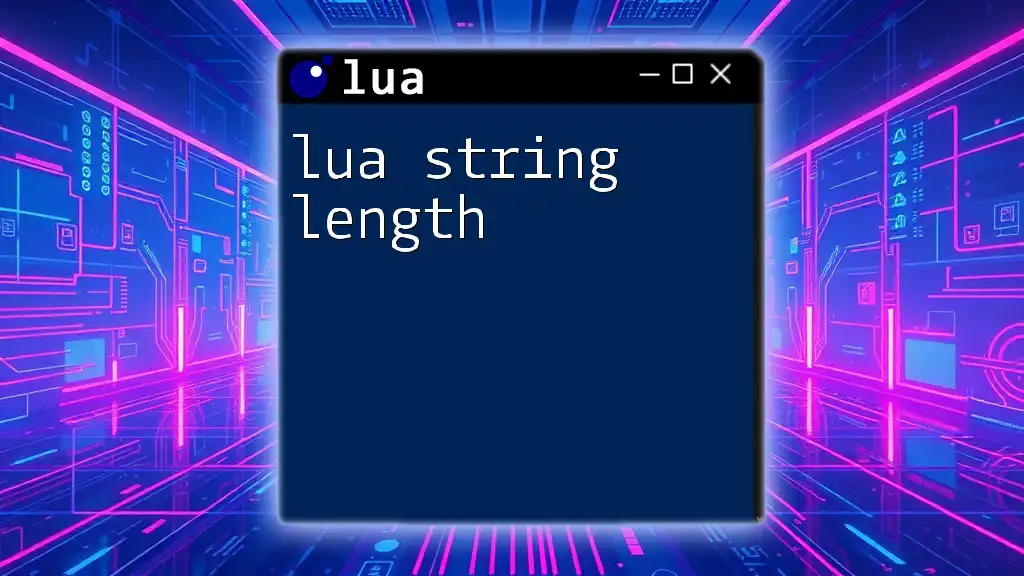
Best Practices
To use `tostring` effectively, adhere to the following recommendations:
- Always Convert Before Concatenation: This ensures that your operations do not lead to type mismatch errors.
- Use In Debugging: Implement `tostring` in logging and debugging functions to maintain a consistent output format.
- Be Aware of Special Cases: Understand how tables and functions are represented and deploy additional methods to access their contents if needed.

Conclusion
The `tostring` function is an invaluable asset in the Lua programming language, enabling clear representation and manipulation of various data types. Whether you are debugging your code or generating dynamic messages, mastering `tostring` will enhance your programming skills and empower you to write cleaner, more effective Lua scripts. Explore further with additional resources and tutorials to maximize your understanding of Lua and its powerful capabilities.

